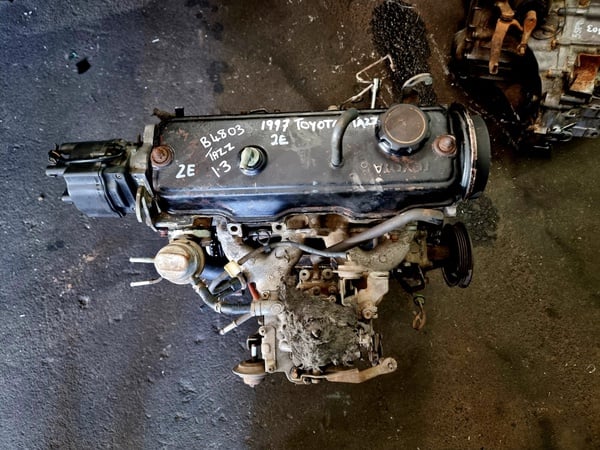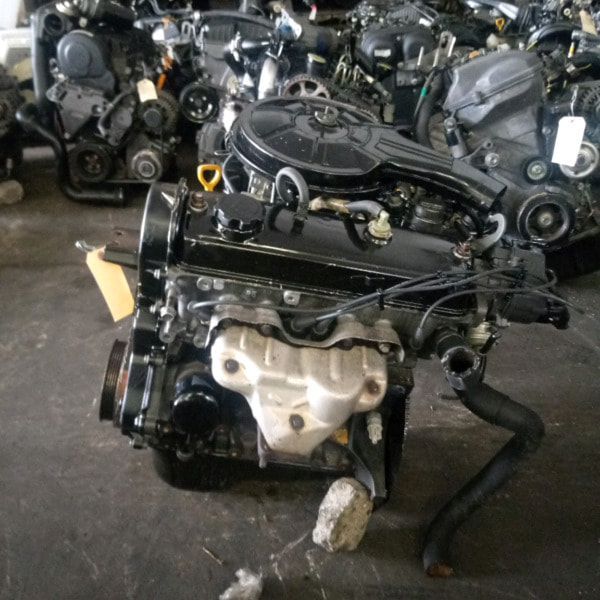Toyota Tazz: The Perfect Combination of Efficiency and Style in a Compact Car
Toyota Tazz: The Perfect Combination of Efficiency and Style in a Compact Car
Blog Article
Check Out the most recent Trends in Engine Innovation With Tazz
In the rapidly evolving landscape of automotive innovation, Tazz stands at the forefront, highlighting substantial innovations in engine systems that focus on both development and sustainability. tazz. From crossbreed engines that maximize fuel effectiveness to the appearance of hydrogen gas cells, the fads forming modern powertrains are not only enhancing performance however likewise addressing essential ecological challenges. As the industry remains to push borders, it is crucial to take into consideration just how these advancements will affect future transportation options and the wider ramifications for worldwide energy intake. What exists in advance in this critical improvement?
Crossbreed Engine Innovations
Hybrid engine technologies stand for an essential shift in automotive modern technology, combining the benefits of interior combustion engines with electric propulsion systems. This integration not just enhances fuel effectiveness yet also lowers exhausts, conference increasingly strict ecological regulations. By utilizing both power resources, hybrid engines can enhance performance, supplying power when needed while preserving fuel throughout less demanding driving problems.
Recent advancements in hybrid innovation consist of enhancements in battery efficiency and regenerative stopping systems. These advancements permit for higher energy healing during deceleration, which can be redirected to help in acceleration or power auxiliary systems. Manufacturers are concentrating on lightweight materials and portable styles to make best use of the effectiveness of crossbreed powertrains.
The advancement of plug-in crossbreeds has additionally increased the market, enabling drivers to bill their vehicles making use of standard electric outlets. This feature usually enables substantial all-electric variety, further lowering dependence on standard gas. tazz. As the automotive industry continues to evolve, hybrid engine modern technologies are anticipated to play a critical duty in linking the gap between standard cars and fully electric designs, offering a transitional solution that satisfies diverse consumer requirements and choices
Breakthroughs in Electric Powertrains
The automobile landscape is quickly progressing, with electric powertrains becoming a leading force in lasting transport. Advancements in electric vehicle (EV) modern technology are significantly enhancing efficiency, user, and efficiency experience. Trick developments include enhancements in battery chemistry, which have actually raised power density, lowered charging times, and extended total battery life.
Solid-state batteries, as an example, assure to transform the marketplace by supplying higher safety and effectiveness compared to standard lithium-ion cells. Developments in regenerative stopping systems are making it possible for cars to recoup energy throughout slowdown, contributing to general performance.
Along with battery modern technology, electrical motor designs are ending up being more advanced. Technologies such as integrated electric motors and advanced thermal management systems are assisting to maximize power distribution and lower weight, ultimately improving automobile characteristics.

Collectively, these advancements highlight the commitment to transition towards cleaner, a lot more reliable transportation options, placing electrical powertrains at the center of automotive technology.
The Surge of Hydrogen Gas Cells
Significantly, hydrogen gas cells are getting grip as a practical alternative to conventional internal burning engines and battery electric cars. This technology uses the chemical power kept in hydrogen, converting it into electrical energy through an electrochemical response with oxygen. The main by-product of this procedure is water, making hydrogen gas cells an ecologically friendly option with absolutely no exhausts at the tailpipe.

Automakers are progressively buying hydrogen gas cell technology, acknowledging its possibility for long-range applications and quick refueling capabilities that measure up to conventional fuels. Additionally, industries such as durable transportation and public transportation are specifically fit for hydrogen fuel cells, where battery electric services may fall short because of weight and variety restrictions.
As study and financial investment proceed to increase, hydrogen fuel cells are poised to play a considerable role in the future landscape of tidy transport and More Help energy options.
Enhancements in Internal Burning Engines
Developments in internal burning engine (ICE) modern technology are changing traditional cars to satisfy contemporary environmental requirements and performance expectations. One of the most significant enhancements involves the assimilation of innovative fuel injection systems. These systems maximize the air-fuel combination, boosting combustion efficiency and resulting in reduced exhausts. Straight fuel her response shot, for circumstances, enables much better atomization of fuel, leading to even more total combustion and boosted power outcome.
In addition, turbocharging has acquired prominence, allowing smaller sized engines to supply higher efficiency without the weight of larger engines - tazz. This modern technology not only improves performance but additionally adds to reduce gas consumption. Variable valve timing systems are additionally being fine-tuned, enabling engines to adjust to various driving conditions for boosted torque and responsiveness
Additionally, using lightweight materials in engine construction is ending up being basic, additional boosting fuel performance by minimizing overall lorry weight. Engine control units (ECUs) are significantly advanced, enabling real-time modifications that optimize efficiency and emissions.
These enhancements collectively symbolize an essential shift in ICE innovation, lining up with worldwide sustainability goals while still giving the performance chauffeurs anticipate from their vehicles. As the sector evolves, these renovations remain to form the future of standard vehicle engineering.
Future Patterns in Engine Effectiveness
Significant advancements in engine effectiveness are anticipated as producers concentrate on incorporating cutting-edge modern technologies to fulfill stringent environmental policies and consumer needs. The change towards electrification, crossbreed systems, and different gas is reshaping the automotive landscape, driving technologies that improve gas economic climate and minimize emissions.
One of the key trends is the execution of innovative materials and manufacturing methods. High-strength alloys and light-weight compounds add to reduced car weight, therefore boosting overall performance. Furthermore, the adoption of turbocharging and variable shutoff timing modern technologies permits boosted power result from smaller engines, look at more info further improving gas economic situation.

Conclusion
To conclude, the expedition of engine modern technology reveals significant advancements that focus on sustainability and effectiveness. Advancements in hybrid engine systems, electrical powertrains, and hydrogen gas cells show a commitment to reducing discharges while enhancing efficiency. Enhancements in inner combustion engines and a focus on light-weight materials contribute to general engine efficiency. As the automobile sector proceeds to progress, these trends will certainly play a vital function fit a cleaner and even more lasting future for transport.
From hybrid engines that optimize gas effectiveness to the development of hydrogen gas cells, the trends shaping contemporary powertrains are not just improving efficiency but also resolving crucial environmental difficulties.Hybrid engine advancements stand for a critical change in vehicle technology, integrating the advantages of inner burning engines with electrical propulsion systems.Furthermore, turbocharging has actually gained importance, allowing smaller sized engines to supply higher performance without the weight of larger engines. Additionally, the fostering of turbocharging and variable valve timing technologies permits for boosted power outcome from smaller sized engines, better improving fuel economic climate.
Renovations in interior burning engines and an emphasis on light-weight products contribute to overall engine effectiveness.
Report this page